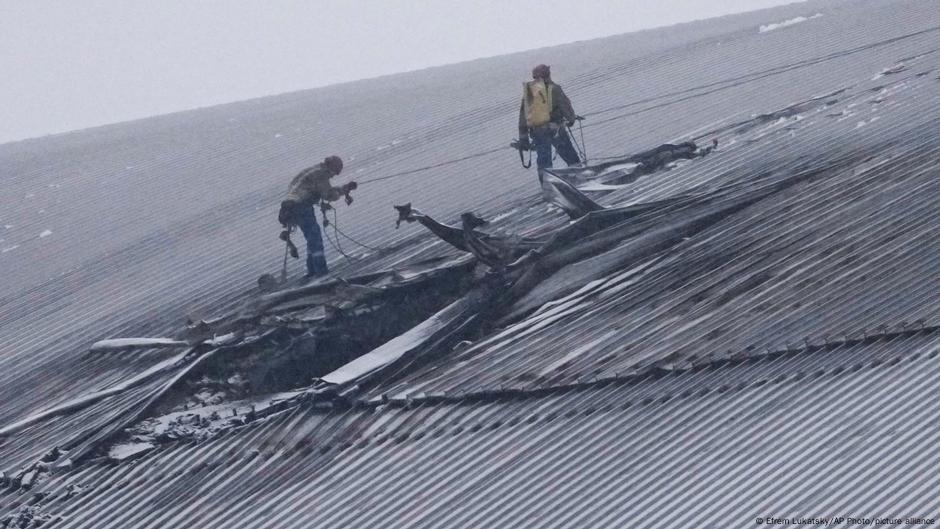Radiation Risks: Chernobyl's Damaged Shelter – A Continuing Legacy of Disaster
The Chernobyl disaster, a catastrophic nuclear accident that occurred on April 26, 1986, remains one of history's most significant environmental and humanitarian tragedies. While the immediate aftermath claimed lives and caused widespread contamination, the long-term risks, particularly those associated with the damaged reactor shelter, continue to pose a significant challenge. This article delves into the ongoing radiation risks associated with Chernobyl's damaged shelter and the ongoing efforts to mitigate them.
The New Safe Confinement: A Monumental Engineering Feat
The original sarcophagus, hastily constructed in the aftermath of the explosion, was never designed for long-term containment. Its deteriorating structure posed a serious risk of further radioactive material release. This prompted the construction of the New Safe Confinement (NSC), a massive arching structure designed to encase the damaged reactor and prevent further environmental contamination. The NSC, completed in 2016, represents a remarkable feat of engineering, but the challenges are far from over.
- Ongoing monitoring: Even with the NSC in place, continuous monitoring of radiation levels is crucial. Sophisticated sensors track radiation dispersal, ensuring the safety of workers and nearby communities.
- Material degradation: The materials within the NSC, including the remnants of the reactor itself, continue to degrade, potentially releasing radioactive particles. This necessitates ongoing maintenance and careful management.
- Long-term stability: The NSC's long-term stability is a subject of ongoing research and monitoring. The structure must withstand extreme weather conditions and the effects of time and decay.
The Human Cost: Health Impacts and Long-Term Consequences
The radiation released during the Chernobyl disaster has had a devastating impact on human health. Increased rates of thyroid cancer, leukemia, and other health problems have been observed in the affected areas. While the NSC significantly reduces the risk of further environmental contamination, the long-term health consequences for those exposed to radiation continue to be a significant concern.
- Ongoing health surveillance: Regular health screenings and monitoring of affected populations are essential to track long-term health impacts and provide necessary medical care.
- Psychological impact: The Chernobyl disaster has had a profound psychological impact on survivors and those living in affected areas. Addressing these mental health challenges is a crucial component of the ongoing recovery efforts.
- Genetic effects: The potential for long-term genetic effects from radiation exposure remains an area of ongoing research. Understanding these effects is crucial for future generations.
The Future of Chernobyl: Decommissioning and Remediation
The decommissioning of the Chernobyl Nuclear Power Plant and the remediation of the surrounding area remain long-term projects requiring significant international collaboration and funding. These efforts involve not only managing the radioactive waste but also addressing the environmental and social consequences of the disaster.
- Waste management: Safe and effective management of radioactive waste is crucial for preventing future contamination. This requires advanced technologies and long-term storage solutions.
- Environmental remediation: Efforts to remediate the contaminated land are underway, focusing on restoring ecosystems and making the area safe for future use.
- Economic development: Supporting the economic development of the affected communities is vital for their long-term recovery and well-being.
Conclusion: A Continuing Challenge
The damaged shelter at Chernobyl represents a stark reminder of the catastrophic consequences of nuclear accidents. While the NSC has significantly reduced immediate risks, the challenges of long-term radiation management, health consequences, and environmental remediation remain significant. Ongoing international cooperation and sustained efforts are crucial to ensure the safety of the environment and the well-being of those affected by this devastating event. Further research and technological advancements are needed to fully address the legacy of Chernobyl.
Keywords: Chernobyl, Chernobyl disaster, radiation, nuclear accident, New Safe Confinement, NSC, radioactive waste, health impacts, environmental remediation, decommissioning, nuclear safety, radiation risks, long-term consequences.

